Zero Weed Killer vs Roundup
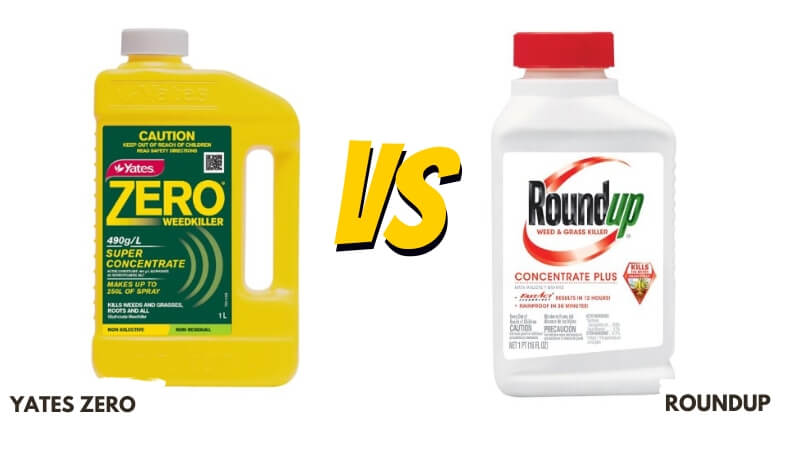
The main difference between Yates Zero Weed Killer and Roundup Weed & Grass Killer is that Yates Zero contains only the active ingredient glyphosate, while Roundup contains both glyphosate and diquat.
The foliage absorbs glyphosate and moves to the roots, destroying the entire plant. Diquat causes rapid damage to plant tissue and quicker visible effects. Roundup is also rainproof more quickly.
Yates Zero vs Roundup
This comparison table will provide you with a quick and easy way to comprehend the distinctions.
| Yates Zero | Roundup |
|---|---|
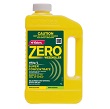 |
 |
| Active Ingredient glyphosate | Active Ingredient 18% glyphosate, 0.73% diquat |
| Glyphosate moves to the roots, destroying the entire plant | Glyphosate moves to the roots, while diquat causes rapid damage for faster effects |
| 200mL Yates Zero makes 50L of spray | 6 oz Roundup for per gallon of water |
| Visible Results within 7-10 days | Visible Results within 12 hours |
| Rain Proof around 6 hours | Rain Proof around 30 minutes |
| For Use in Garden beds, paths, driveways, lawn edges, areas for new plantings | Use Around trees, shrubs, patios, gravel areas, lawn renovations – not around existing edibles |
| Apply, When weeds are actively growing and early flowering, temps above 10°C | Apply in Warm weather above 60°F when air is calm |
| Spray until just wet, leave 2 weeks before disturbing treated area | Use tank sprayer to thoroughly wet foliage, rinse accidental overspray immediately |
| Non-Residual | Non-Residual |
| Non-selective, systemic weedkiller effective against grasses, broadleaf weeds, bushes and trees. Super concentrate formula | Designed to kill tough weeds and grasses down to the root. Provides visible effects in 12 hours. Concentrated formula. |
Product Info
Yates Zero Weed Killer Super Concentrate is a non-selective, systemic herbicide effective against all types of weeds, including lawn weeds, vines, shrubs, and trees.
Roundup Weed & Grass Killer Concentrate Plus is specifically designed to kill tough weeds and grasses, guaranteed down to the root.
It is optimized for use in a tank sprayer and works on the toughest common weeds while avoiding harm to desirable plants.
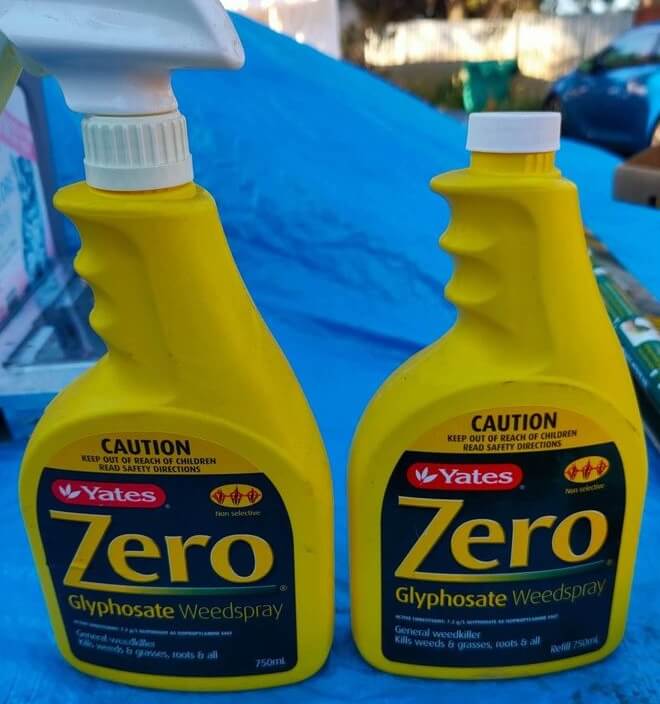
Mode of Action
The active ingredient in Zero, glyphosate, is absorbed by the plant’s foliage and then transported throughout its tissues down to the roots, resulting in the destruction of the weed.
Roundup utilizes glyphosate along with diquat, which disrupts cellular functioning in plant tissues, leading to rapid damage to the weed’s leaf tissue and roots. The dual-action provides faster visible effects than glyphosate alone.
Mixing Ratio
Zero comes as a super concentrate, where 200mL makes up to 50 liters of spray solution, proving economical and efficient. Roundup requires mixing at a ratio of 6 oz per gallon of water and is optimized for use in a tank sprayer.
The Roundup mixing ratio gives the concentrated solution needed for tough weeds. In contrast, Zero’s concentrate goes further for Broadcast spraying diverse weeds.
Active Ingredients
The active ingredient in Zero is glyphosate as the isopropylamine salt. This allows glyphosate to be readily absorbed by plants. Roundup contains glyphosate at 18% concentration along with 0.73% diquat, both as active ingredients. The diquat works synergistically with the glyphosate to deliver faster control and root kill of weeds.
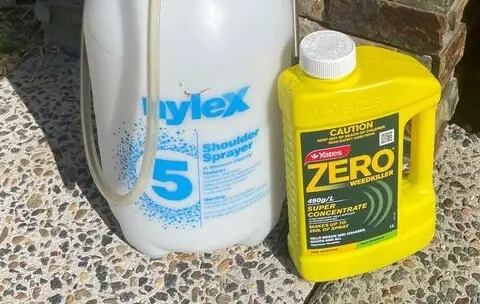
Visible Result
Roundup’s FastAct Technology means visible effects can be seen in as little as 12 hours after application. Zero does not contain this additive, so visible yellowing and wilting of weeds starts in 7-10 days after application, progressively leading to browning and death. The dual-action of Roundup delivers noticeably faster visual effects.
Rain Proof
Zero requires at least 6 hours of dry weather after application for the active ingredient to be properly absorbed. Roundup is rainproof after just 30 minutes, so rainfall won’t affect its fast-acting performance.
The rapid absorption of Roundup makes it a better choice for regions with frequent rain, whereas Zero needs a longer dry period to be effective.
Directions for Use
Zero directions specify not disturbing treated weeds for two weeks after application for best results. Roundup recommends using a branded tank sprayer and rinsing off any accidental contact with desirable plants immediately.
Both herbicides can allow treated areas to be reentered after drying. Proper protective equipment should be used with either product during mixing and application.
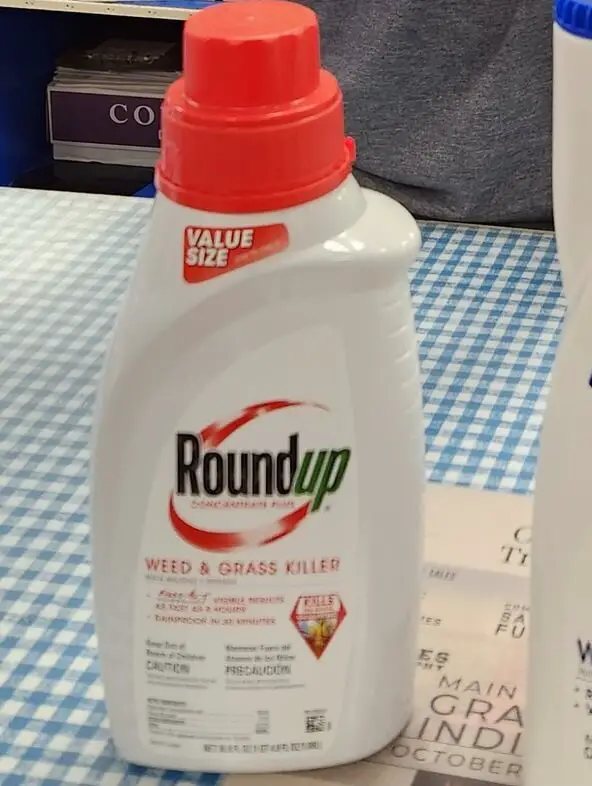
Non-Residual
An important advantage of both Zero and Roundup is that they do not leave behind long-lasting residual activity in the soil after application.
This makes them suitable for areas where new vegetation is to be planted, as residual herbicides can harm new plantings.
The non-residual nature means they only affect established weeds present at the time of spraying. New weeds can still germinate from seed after treatment.
When to Apply
For best effects, Roundup should be applied in warm, sunny weather (above 60°F) when the air is calm. Weeds start wilting in 12 hours and die within 1-2 weeks.
Zero is also most effective when applied to actively growing weeds at the early flower stage when temperatures exceed 10°C.
Zero may take reapplication after 4 weeks, while Roundup can reapplied after 7 days if needed. The ideal conditions differ slightly, but sun and warmth are key.
Where to Use
Zero can be used in gardens, rockeries, paths, driveways, lawn edges, and for preparing new planting beds. It should not be used around existing plants you want to keep.
Roundup is approved for use around established trees, shrubs, flowers, patios, walkways, and along fences but is not suitable around edibles. The key difference is Zero non-selectively kills all plant types, while Roundup targets only tough weeds.
Our Observation
While both products contain glyphosate, Yates Zero Weed Killer is a more economical concentrated formulation. At the same time, Roundup Weed & Grass Killer offers faster visible results and is rainproof more quickly.
Yates Zero is suitable for broader application in landscaped areas, while Roundup is mainly for spot treatment of emerged weeds. When choosing between the two, consider the weeds to be controlled, the desired speed of results and the budget.
Proper application techniques should be followed with both herbicides to maximize performance while minimizing off-target damage.

James E. Butkovich, Pest control maven with a knack for eco-friendly & Chemical solutions. Blogger with a mission to make homes pest-free, one post at a time.